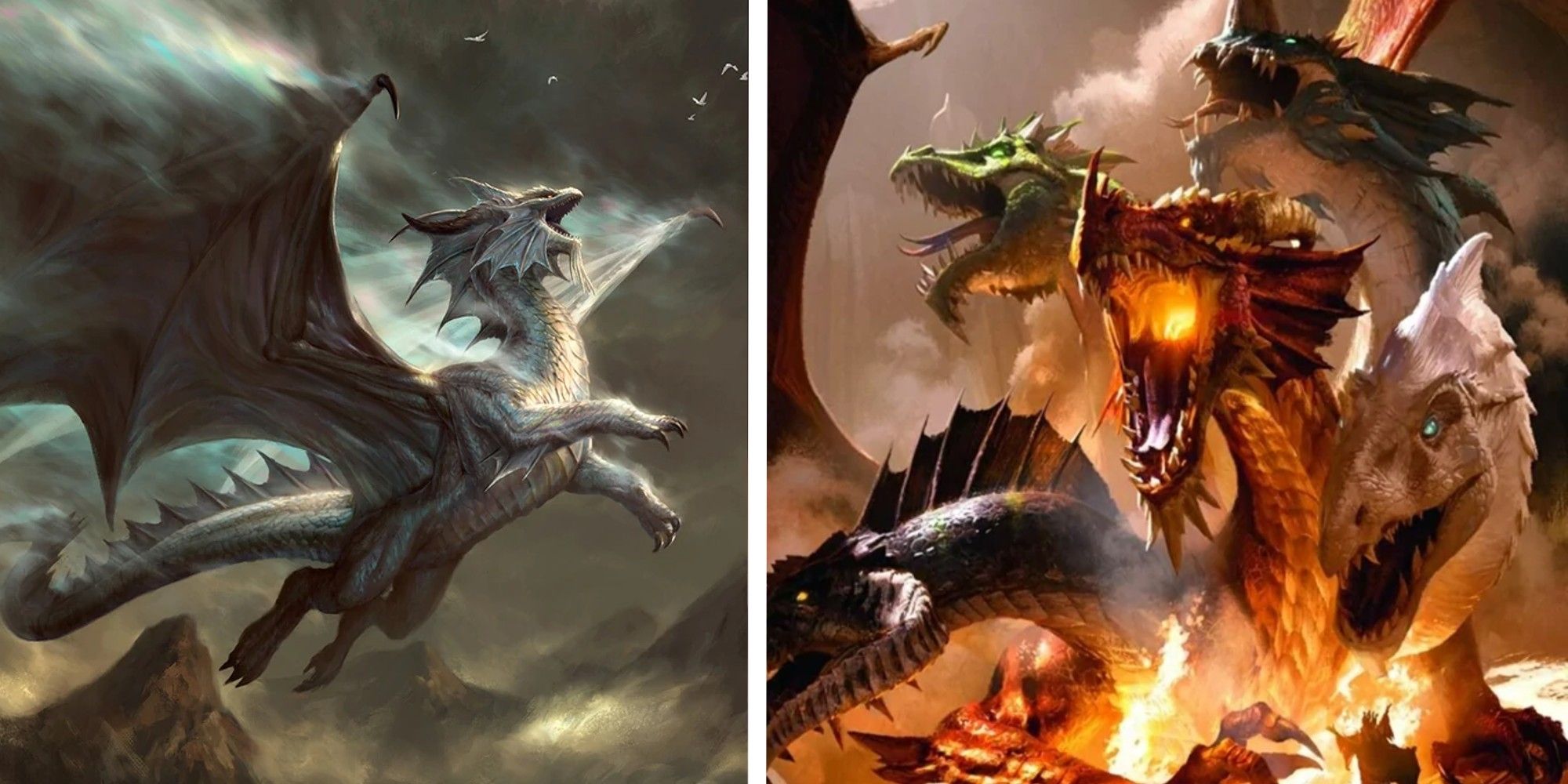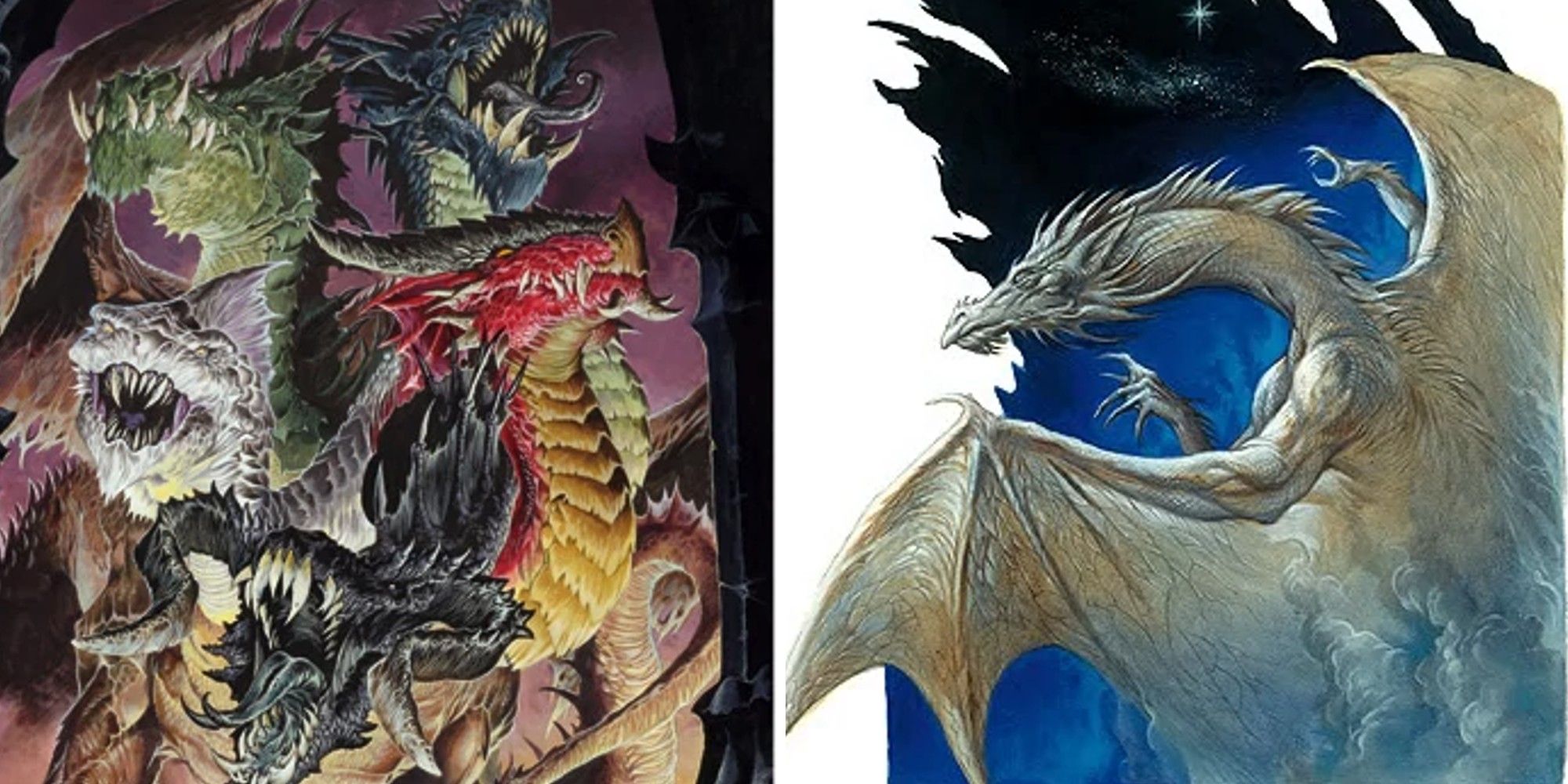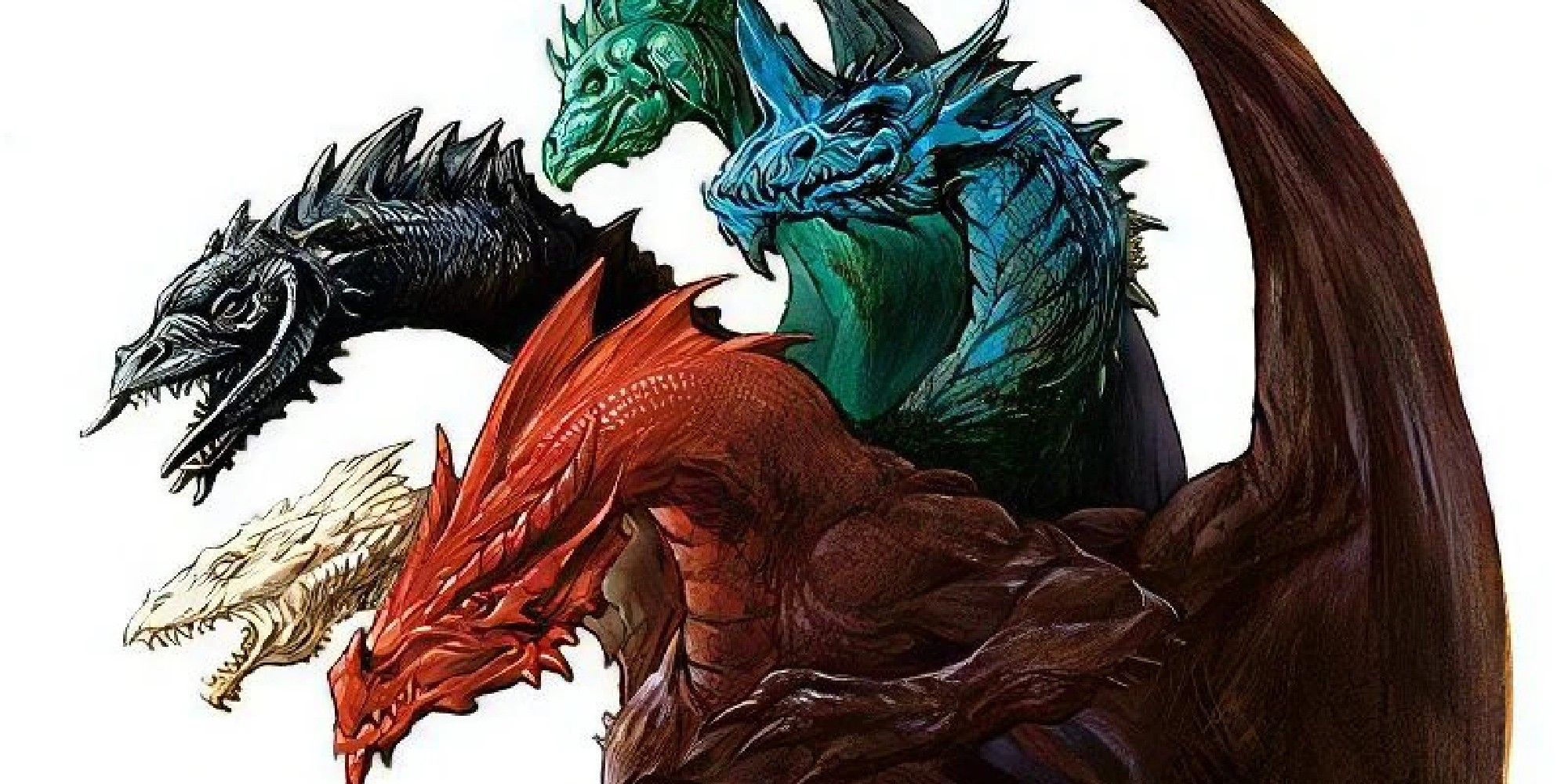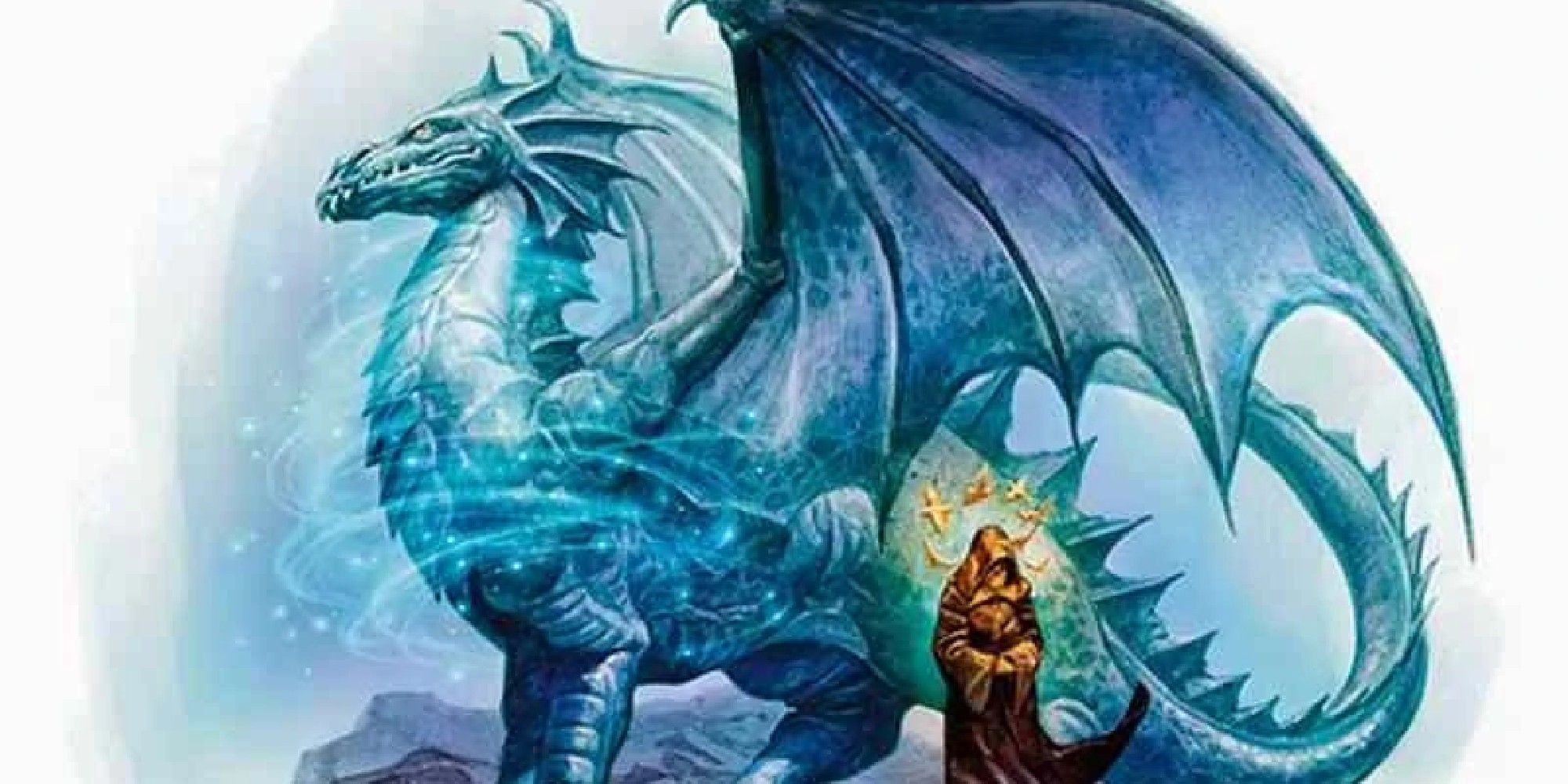There are many deities in the Dungeons & Dragons pantheon. With a godly entity representing nearly every aspect of life, there's no shortage of deities for a budding paladin or cleric to choose from. That being said, with so many gods to choose from, it's not uncommon for one or two of them to fade into the background. Despite this, two deities seem to appear in every setting.
The twin dragon gods, Bahamut and Tiamat, are two of the most iconic deities in all of D&D. They gave rise to metallic and chromatic dragons respectively, and yet, like their creations, they are opposites. Standing on either side of the lawful alignment, the draconic siblings have always had an outstanding hatred for one another. This animosity has always been accepted, but where did it truly begin?
Born Rivals
According to the myths stated in Races of the Dragon, both Bahamut and Tiamat were born to Io, the god of balance and dragonkind. They were created to compliment the other and, eventually, mate. It was Io's intention for the duo to have children that took on the best traits of both of his children and, while he had the best of intentions, this would not come to pass.
Both children were instantly antagonistic towards the other. It's unclear what spurred this dislike for the other, but every early tale of the two saw them as rivals at best and enemies at worst. Their two's rivalry went on unchecked for years, much to Io's chagrin, but the god would not pick sides. He loved his children dearly and refused to pick a favorite, no matter how much the two vied for his attention. It was this refusal, or perhaps his willful ignorance, that led the antagonistic interactions of his children to fester into something hideous.
Tiamat's Scheme
What many don't know is that Bahamut and Tiamat had an elder sibling. The first child of Io was named Vorel, roughly translating to "beautiful" in Draconic. They were a small and simple creature, hardly above a common drake. Yet, Io loved them nonetheless, which made what happened to him all the more heartbreaking for the god.
Tiamat, in her desire for Io's favor, concocted a nefarious scheme to garner Io's favor while simultaneously sullying her brother's name. She killed Vorel in cold blood and attempted to frame Bahamut for his death. Io, however, saw through Tiamat's lies and was greatly saddened, not only by the loss of his firstborn but also by the betrayal of his daughter.
Io would banish Tiamat from his realm, further fueling the anger and hatred within her. She would fall into the practices of chaos and evil, creating the first chromatic dragons. Bahamut, her sister's ever rival and opposite, would side with law and order and create the metallic dragons.
Elegy For The First World Rendition
There are several conflicting origins regarding Bahamut and Tiamat. According to the myths of the dragonborn of Abeir, both Bahamut and Tiamat were born from the corpse of Io, the god having been killed during the Dawn War. At the same time, some believe that the twins were the children of Asgorath along with their other sibling, Null. Some myths state that the two simply came into being through the primordial chaos at the beginning of time.
Regardless of their origins, all texts confer that the two dragons worked in tandem, creating both the metallic and chromatic dragons as well as the dragon god Sardior. They even fought together when the gods of the Outer Plane invaded the First World. Bahamut was the first to fall, forcing him to flee and wander the Material Plane. Tiamat too was defeated and imprisoned in the Nine Hells for opposing the gods.
The Dragonfall War
Conflicting origins aside, the one thing that all texts agree upon was the rivalry the two felt grew into hatred. The conflicting ideals of Bahamut and Tiamat, as well as their followers, became too much for them to bear and war was inevitable. The two factions clashed in a bloody battle that would come to be known as the Dragonfall Wars.
On Tiamat's side, the dragoness created draconic aberrations to aid her followers in their quest to crush those that worshiped Bahamut. Meanwhile, the Platinum Dragon was not ideal. Seeing the horrific creations that his sister had created, he too created warriors of his own known as Ux Bahamuti, or dragonborn of Bahamut, to aid his worshipers in their plight.
The Rise Of The Untheric Empire
Neither side was able to gain the upper hand over the other, leading to the war lasting for hundreds of years. In this time, the Untheric Empire was formed, and their pantheon became quite prominent within the world. It was this pantheon that named both Bahamut and Tiamat as deities, granting both dragons human worshipers, and elevating both of their powers to the divine.
Tiamat would be added to the pantheon to balance the "order" of the pantheon with her chaos. Unfortunately, this act increased the worst of Tiamat's traits, turning her into something that couldn't be balanced by the gods of order. Bahamut, or Marduk as he had begun to be referred to by those of the Untheric Empire, as well as the other Untheric gods, sought to oppose the now empowered deity, but they were unable to overcome her power, leading to a stalemate that lasted for centuries. It wasn't until -1071 DR, or Dalereckoning, that this power struggle, and the Dragonfall War, would reach its climax.
The Dragons' Fall
During a crucial battle that would later be referred to as the Battle of the Gods, the God-King Gilgeam was battling against the orc god Ilneval. While he was preoccupied, Tiamat attempted to slay the pantheon's leader, but her brother would intercept her attack. In the ensuing battle, both siblings would perish, killing their Untheric aspects and robbing them both of their divine power.
With his church having been destroyed, Bahamut would be reduced to a celestial paragon and wander the material planes, doing what he could to maintain order and good. Tiamat, who had been reduced to an archfiend, went to Avernus where she was given control over this layer by none other than Asmodeus. Both siblings would remain in these states for several centuries before they could regain their divinity.
Return To Divinity
In the year 1346 DR, unrest directed towards the gods had begun spreading across Unther. Many were dissatisfied with the tyrannical rule of Gilgeam and turned to the "Nemesis of the Gods" for help. A group of cultists summoned an aspect of Tiamat from Avernus, enlisting her help in instilling rebellion against the church of Gilgeam. While Gilgeam would eventually slay this aspect of Tiamat, the divinity she had obtained was split between three powerful chromatic dragons.
In an act of cannibalism, one of the dragons, Tchazzar, devoured the other two, combining the rest of Tiamat's essence. This act not only resurrected Tiamat as a lesser deity but also created the five-headed dragon that we all know today. With her newly obtained power, Tiamat was able to slay Gilgeam and dissolve the Untheric pantheon.
At the same time, Bahamut had also regained his own divinity. After granting the Tree-Gem to a group of adventurers tasked with traversing through the Abyss to destroy the Wand of Orcus, there was a renewed interest in Bahamut. Many non-dragons began worshiping the platinum dragon once again, elevating him to a minor deity like his sister.
With the return of their divinity, the siblings began making preparations for a renewal of the Dragonfall War. Tiamat unleashed her aberrant dragonspawn as well as her followers to make trouble for the Church of Bahamut, but her brother would respond by reviving the dragonborn of Bahamut. While the two have not officially restarted their war, tensions between the two had never been higher, and it's only a matter of time before Law and Chaos clash once more.




